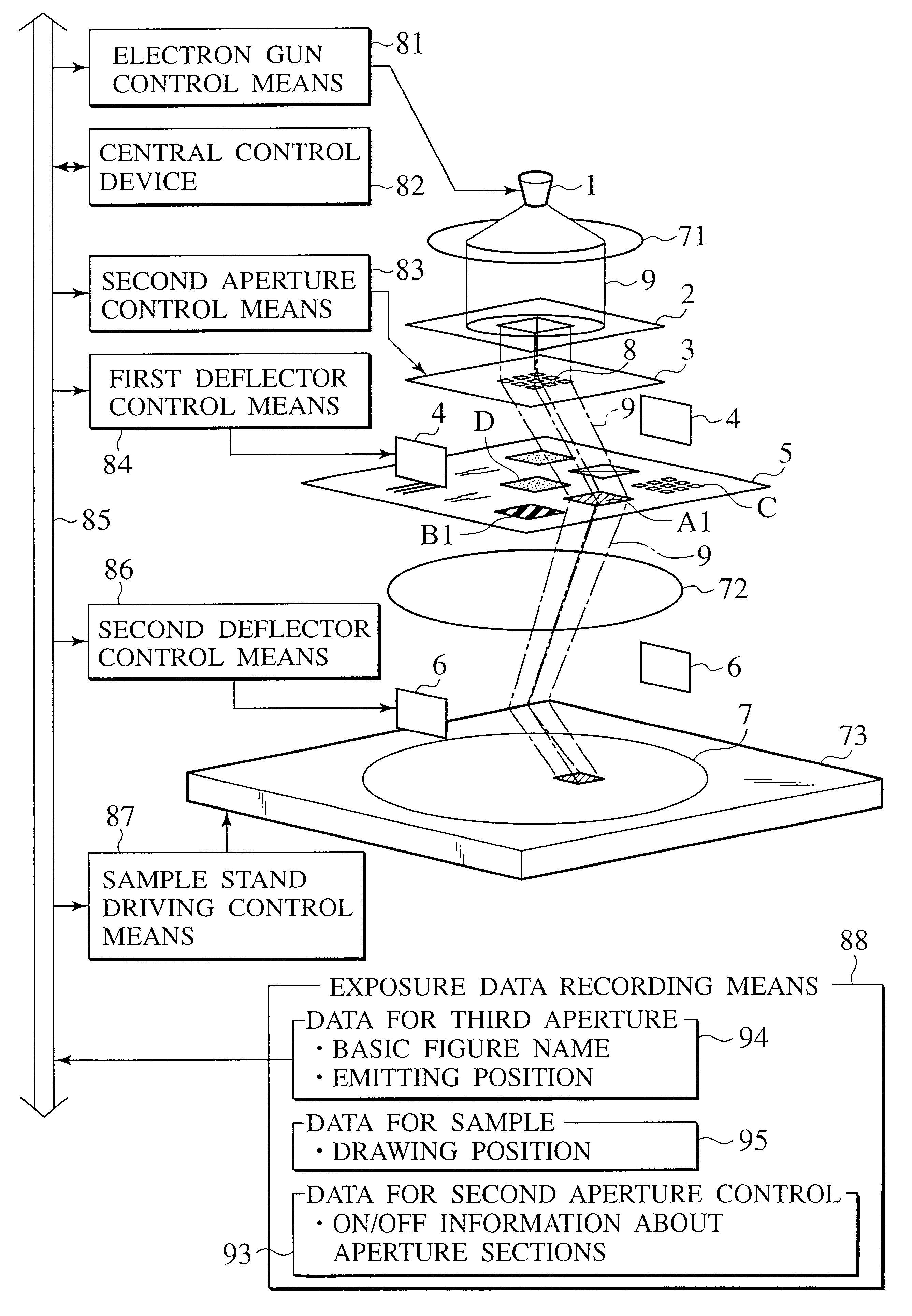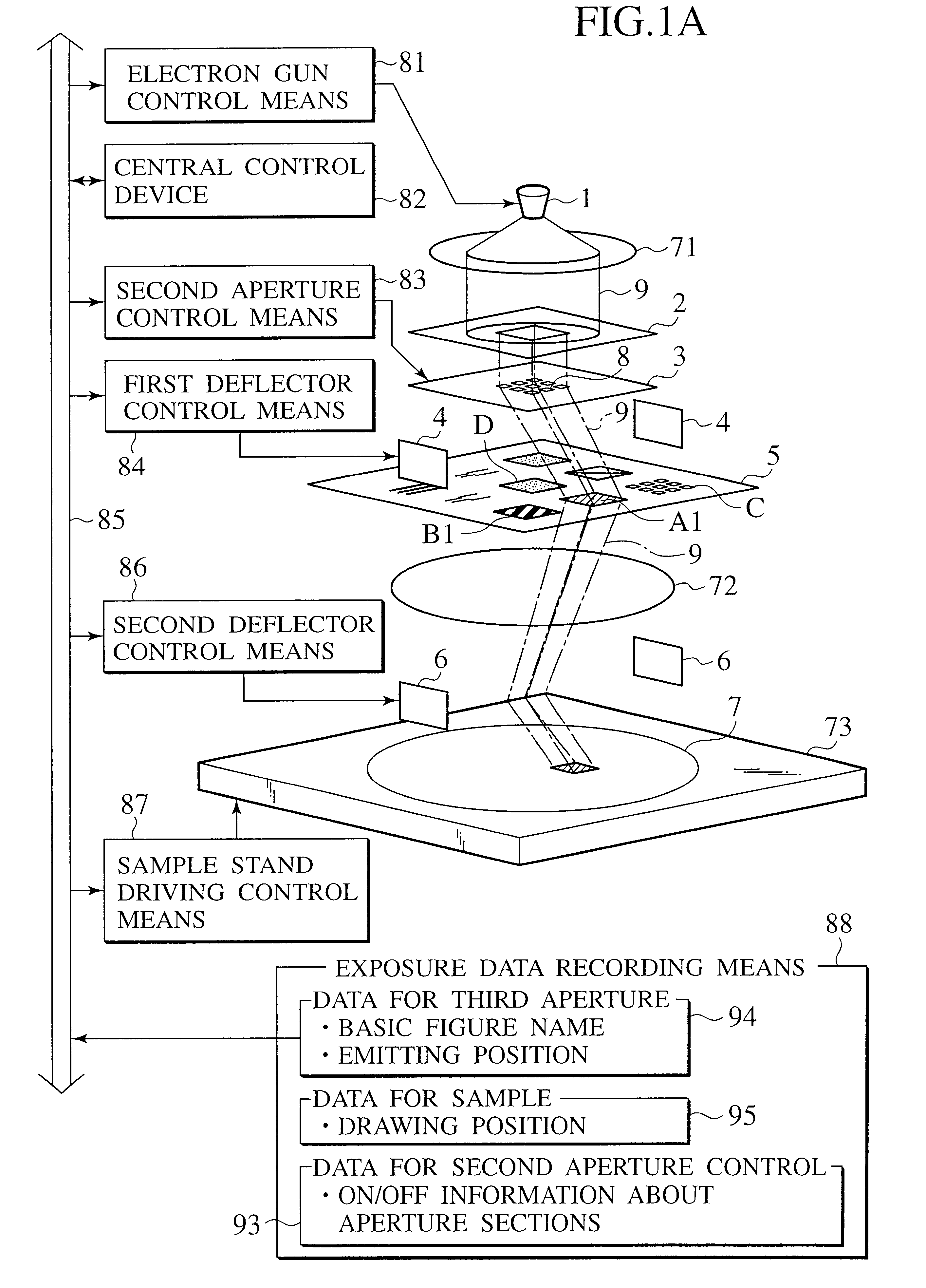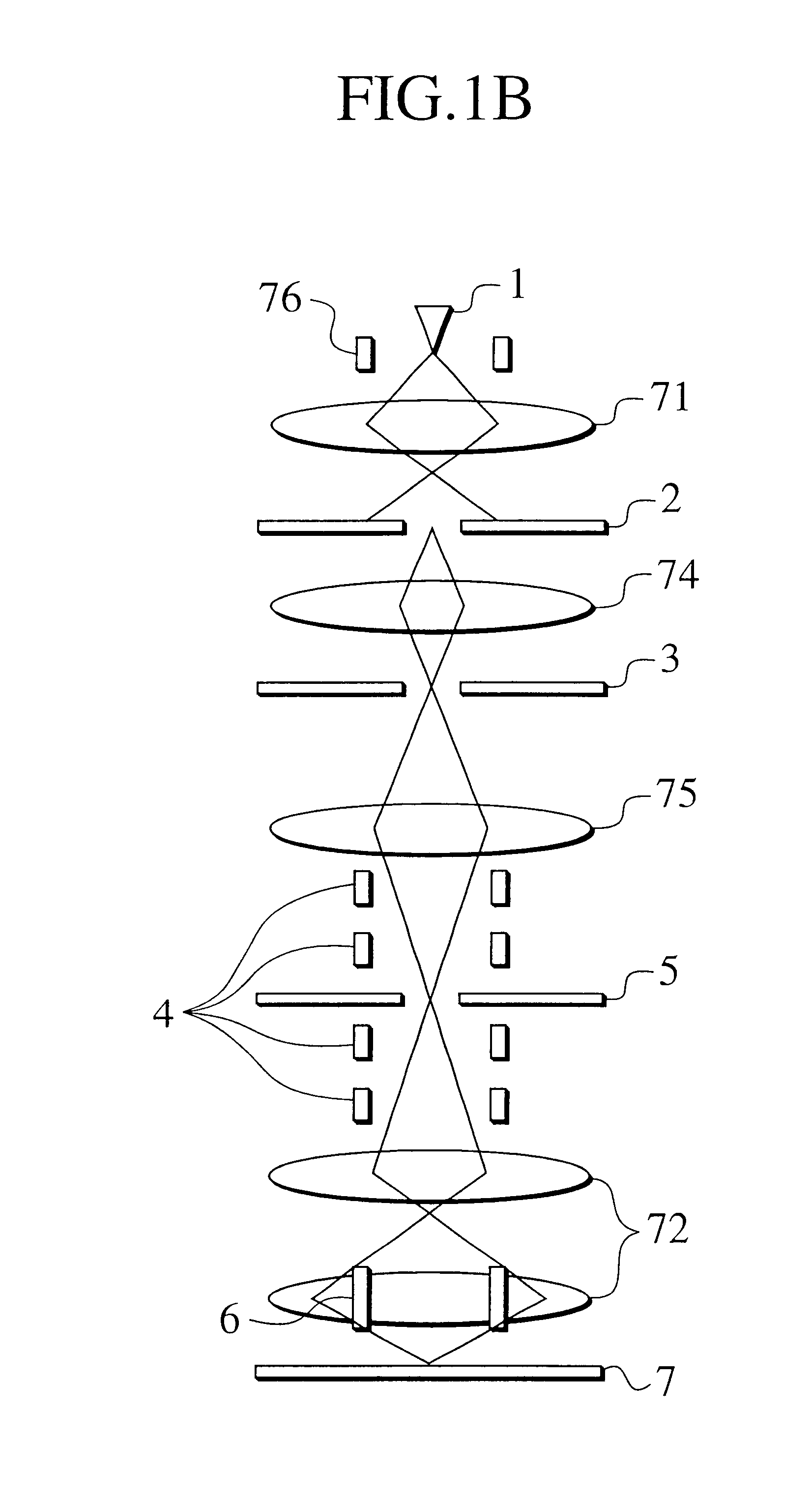Charged beam exposure apparatus having blanking aperture and basic figure aperture
a charge beam and blanking aperture technology, applied in the field of electron or ion charged beams, can solve the problems of insufficient throughput, longer exposure time, and inability to obtain throughpu
- Summary
- Abstract
- Description
- Claims
- Application Information
AI Technical Summary
Benefits of technology
Problems solved by technology
Method used
Image
Examples
second embodiment
(Second Embodiment)
Next, there will be explained below the creating method according to the second embodiment which is obtained by developing the exposure data creating method explained in the first embodiment. Moreover, there will be explained below the exposure method according to the second embodiment using the developed creating method. FIG. 11 is a flow chart showing the exposure data creating method according to the second embodiment.
In the exposure data creating method according to the second embodiment, at step S4 data of the layout in the semiconductor apparatus are divided into a vertical line pattern and a horizontal line pattern which take reduction in the exposure into consideration.
Next, at step S5 widths of the vertical line patterns are enlarged so that a first pattern, in which the adjacent vertical line patterns are integrated, is created. Further, widths of the horizontal line patterns are enlarged so that a second pattern, in which the adjacent horizontal line pa...
third embodiment
(Third Embodiment)
The third embodiment will explain the case where LSI type patterns are used as the basic figures of the basic figure apertures.
In the third embodiment, the exposure apparatus used in the first embodiment is used. The characteristic of the third embodiment is that a lot of LSI type patterns 126 are arranged on the third aperture array (basic figure aperture array) 101 as shown in FIG. 18A. Here, the LSI type patterns 126 are patterns of parts composing an LSI circuit. The LSI chip is designed so that several hundred kinds of standard cell (SC) patterns are combined according to applications and are arranged. The third embodiment will explain the case where the SC patterns are the type patterns, namely, the basic figure patterns 126.
SC patterns 103 to 105 shown in FIG. 18B are arranged on one basic figure pattern 102 in the plural basic figure patterns 126. FIG. 18B is one example, and a plurality of SC patterns having different forms (functions) are arranged in the ...
fourth embodiment
(Modified Example of Fourth Embodiment)
The modified example of the fourth embodiment will explain the case where the basic figures of the basic figure apertures are oblique wiring patterns.
In the modified example of the fourth embodiment, the exposure apparatus used in the first embodiment is used. The feature of the modified example of the fourth embodiment is that oblique wiring patterns 163 and 164 are arranged on a third aperture array 162 as shown in FIG. 25B. The oblique wiring pattern 163 is an oblique wiring pattern from the upper left to the lower right. The oblique wiring pattern 163 has ten apertures R1 to R10. The oblique wiring pattern 164 is an oblique wiring pattern from the upper right to the lower left. The oblique wiring pattern 164 has ten apertures L1 to L10. The third aperture array 142 shown in FIG. 25B has aperture 145 for a VSB exposure.
Further, aperture sections 161 shown in FIG. 25A are formed on a second aperture array 160 to be used in the modified exampl...
PUM
| Property | Measurement | Unit |
|---|---|---|
| acceleration voltage | aaaaa | aaaaa |
| width | aaaaa | aaaaa |
| width | aaaaa | aaaaa |
Abstract
Description
Claims
Application Information
 Login to View More
Login to View More - R&D
- Intellectual Property
- Life Sciences
- Materials
- Tech Scout
- Unparalleled Data Quality
- Higher Quality Content
- 60% Fewer Hallucinations
Browse by: Latest US Patents, China's latest patents, Technical Efficacy Thesaurus, Application Domain, Technology Topic, Popular Technical Reports.
© 2025 PatSnap. All rights reserved.Legal|Privacy policy|Modern Slavery Act Transparency Statement|Sitemap|About US| Contact US: help@patsnap.com



